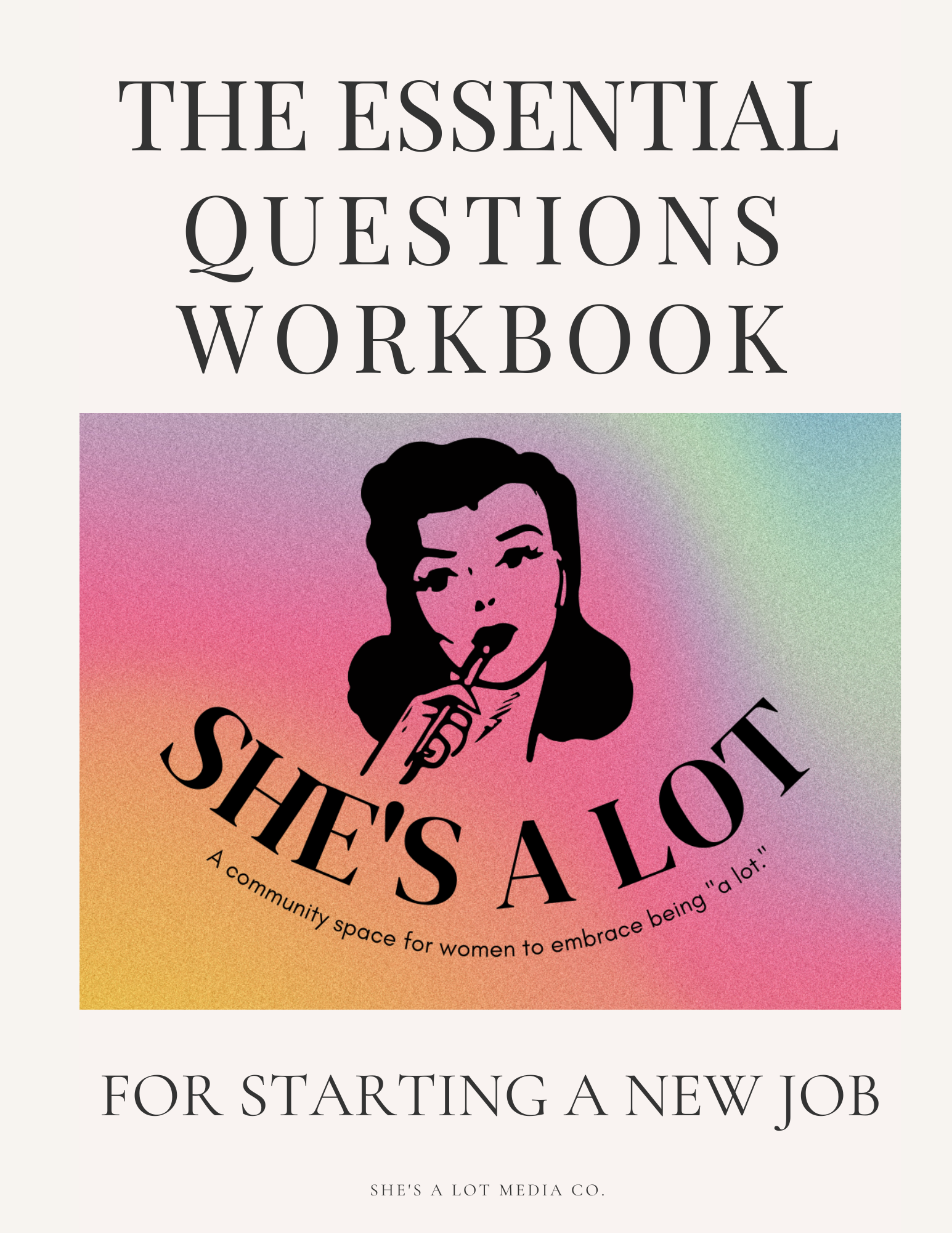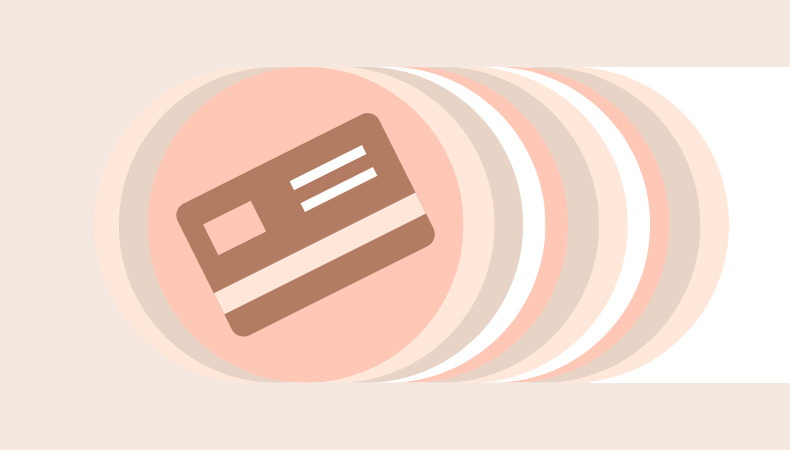Navigating the world of personal finance and budgeting methods can feel more complicated than figuring out how long your ex has been with his new girlfriend. Just like social media stalking, it’s a journey that requires a strategic approach – especially when it comes to budgeting.
From the tried-and-true techniques to innovative approaches, the five budgeting methods we’re sharing aren’t just about balancing numbers; they’re about aligning your financial goals with your unique lifestyle. Whether you’re a recent graduate, a career professional, or an aspiring entrepreneur, these budgeting methods offer you the tools to take charge of your financial journey.
- How to Pick a Budgeting Method
- Common Misconceptions About Budgeting
- 5 Budgeting Methods to Try
- 6 Useful Tools for Budgeting
- FREE Budgeting Worksheet
By the end of this article, you’ll not only have a clearer understanding of how to manage your money but also discover the approach that best resonates with your goals and aspirations. Let’s dive in and uncover the strategies that will empower you to make the most of every dollar you earn.
How to Pick a Budgeting Method
You’re short on time – we get it. The world isn’t going to run itself. To get you back to your day as quickly as possible, use this cheat sheet to jump to where you want to be:
- If you want to know where every dollar is going, try this.
- For a simplified budget that helps you save, try this.
- If you need to better understand your spending before making further financial decisions, try this.
- If you’re struggling with credit card debt or unexpected expenses, try this.
- If you need to control overspending, try this.
Common Misconceptions about Budgeting
Just like men’s understanding of what “natural makeup” is, many people don’t understand budgeting and why everyone needs to be doing it. We’re here to break down some of those misconceptions so you can get back to getting rich:
- “Wealthy people don’t have to budget.”
- The truth: The primary purpose of budgeting is not to lower your spending. This can be accomplished through budgeting if you need to, but budgeting simply helps you understand where your money is going so you can make changes if you want to.
- Budgeting is always difficult.
- The truth: There are many different ways to budget, and especially with financial tools and apps, budgeting can be made incredibly easy and painless. You just have to pick the right method and tool for you.
- The only way to budget is to track all your expenses.
- The truth: Many budgeting methods will involve tracking your individual expenses, but not all. And with the help of a budgeting tool or app, you can set up auto-tracking and auto-categorization to eliminate manual tracking.
- Budgeting is limiting.
- The truth: Budgeting does not have to involve feeling guilty or limiting your spending if it matches your financial goals. Budgeting is not all about telling yourself you can’t have that $7 latte. It’s simply a way to stay aware of your financial habits and ensure they match your financial goals.
Budgeting is for everyone, and there’s no reason that it needs to be difficult! Explore some common budgeting methods below to find the right fit for you, as well as some tools to help you automate and save yourself even more time.
5 Budgeting Methods to Try
1. The Zero-Based Budgeting Method
In this method, you allocate every dollar of your income for a specific purpose, down to zero. In other words, your income minus your expenses should equal zero at the end of the budgeting process.
Here’s how the zero-based budgeting method works:
- Calculate Your Income: Start by determining your total income for the budgeting period. This can include your salary, wages, freelance income, and any other sources of money you receive.
- List Your Expenses: Make a comprehensive list of all your monthly expenses. Categorize them into essential expenses (needs) and discretionary spending (wants). Essential expenses are things like housing, utilities, groceries, transportation, insurance, and debt payments.
- Assign Dollar Amounts: For each expense category, allocate a specific dollar amount based on your income and financial priorities. Begin with the essential expenses, ensuring that they are covered first. Then allocate funds for free spending, savings, debt repayment, and other financial goals. Luckily for you – we have a free worksheet to help you do this!
- Adjust and Revise: Each month, track your spending and compare it to your allocated amounts. If you overspend in one category, you’ll need to adjust your budget by taking funds from another category. The goal is to make sure you’re staying within your allocated amounts and maintaining a balanced budget.
Note: If you use an app/tool, this will be much simpler and require less manual work.
Highlights of Zero-Based Budgeting:
- It forces you to consider every dollar you earn and how it’s allocated, leading to a clearer understanding of your financial situation.
- You decide where your money goes based on your priorities. This helps you focus on what truly matters to you and avoid unnecessary expenses.
- You can easily allocate funds for savings, investments, debt repayment, and other financial goals, increasing the likelihood of achieving them.
- It requires a lot of manual work if you don’t use an app/tool.
- You can easily still overspend each month.
Zero-based budgeting requires diligence, discipline, and ongoing monitoring, but it can provide a strong framework for managing your finances, controlling spending, and achieving your financial goals. It’s a proactive approach that empowers you to take control of your money and make intentional financial decisions.
2. Percentage-Based Budgeting Methods
There are two main percentage-based budgeting methods: the 50/30/20 method and the 60% method. Both methods have you allocate your income into specific categories based on predetermined percentages. These methods help you maintain a balanced financial plan by ensuring that you allocate funds for different financial goals and priorities. Let’s delve into each method:
The 50/30/20 Method:
In the 50/30/20 budgeting method, you allocate your after-tax income into three main categories, each representing a percentage of your total income:
- 50% for Needs: Allocate 50% of your income to cover essential needs and fixed expenses. This includes necessities like housing, utilities, groceries, transportation, insurance, and minimum debt payments.
- 30% for Wants: Allocate 30% of your income to discretionary spending and lifestyle choices. This category includes things like dining out, entertainment, shopping, hobbies, and non-essential subscriptions.
- 20% for Savings and Debt Repayment: Allocate 20% of your income to savings, investments, and debt repayment. This category covers contributions to your emergency fund, retirement accounts, other savings goals, and extra payments on debts beyond the minimum.
The 60% Method:
The 60% method is similar to the 50/30/20 approach but makes your allocations more specific and places a stronger emphasis on essentials, ensuring that the majority of your income covers your basic needs:
- 60% for Essentials: Allocate 60% of your income for essential needs, such as housing, utilities, groceries, transportation, and insurance.
- 10% for Retirement and Savings: Allocate 10% of your income to savings, investments, and retirement accounts.
- 10% for Debt Repayment: Allocate 10% of your income to paying off debt beyond the minimum payments. If you have no debt, you can fold this into your spending or savings.
- 20% for Discretionary Spending: Allocate 20% of your income for discretionary spending, which includes entertainment, dining out, shopping, and other non-essential expenses.
Highlights of Percentage-Based Budgeting:
- They are both more straightforward budgeting methods that require less manual work.
- You don’t need to break down your expenses into specific categories and track them as long as you’re not exceeding your allocated amount for spending.
- Both methods encourage you to set and prioritize financial goals, ensuring you allocate funds toward saving, investing, and debt repayment.
- Because you have already allocated money to your necessities, savings, and investments, you don’t need to worry about individual purchases derailing your financial goals.
The Cash Flow Budgeting Method
This method involves tracking your cash flow by categorizing your income and expenses as they occur. It provides a real-time view of your financial situation and helps you make adjustments as needed. It provides a clear picture of the money coming into and going out of your accounts, helping you make informed financial decisions and stay on top of your spending patterns.
Here’s how the cash flow budgeting method works:
- Keep track of all the money you receive, including your salary, freelance income, side gigs, and any other sources of cash inflow. This could also include gifts, bonuses, and tax refunds.
- Document all your expenses, whether they’re fixed expenses like rent and utilities, variable expenses like groceries and entertainment, or one-time purchases.
- Group your expenses into categories to help you understand where your money is going. Common categories include housing, transportation, groceries, dining out, entertainment, savings, and debt payments.
- Subtract your total expenses from your total income to determine your net cash flow. A positive net cash flow indicates that you have more money coming in than going out, while a negative net cash flow suggests the opposite.
- Regularly review your cash flow to identify spending trends, areas where you might be overspending, and opportunities for savings. Use this information to adjust your spending habits and financial priorities as needed.
Note: If you use an app/tool, this will be much simpler and require less manual work.
Highlights of the Cash Flow Budgeting Method:
- Since the method is based on actual cash flows, you have the flexibility to adjust your budget in response to changes in your income or expenses.
- Cash flow budgeting ensures that you’re accurately tracking your spending, including both planned and unexpected expenses.
- By closely monitoring your cash flow, you can reduce the risk of overdrafts or bounced checks, helping you avoid costly fees.
- Tracking your cash flow encourages mindful spending and makes you more aware of your financial choices.
- It can be cumbersome and require manual work.
Cash flow budgeting forces you to be aware of your expenses at all times, but for some, this can be stressful and even a limiting mindset. It can also be difficult to save or invest with this method unless you’re using a pay-yourself-first approach. However, it is useful for individuals who want a detailed, real-time understanding of their finances and prefer a more dynamic budgeting approach.
The Sinking Fund Budgeting Method
With this method, you allocate funds to specific categories in advance to cover irregular or expected expenses, such as vacations, holidays, and car repairs. This prevents these expenses from derailing your budget.
Sinking funds can be particularly helpful for larger, less frequent expenses that might otherwise strain your budget. However, this method does not help you gain an understanding of or control your everyday spending and does not address saving and investing in the same way as other budgeting methods.
Here’s how the sinking fund method works:
- Identify Future Expenses: Start by making a list of upcoming expenses that you know will occur but may not happen every month. These could include things like annual insurance premiums, holiday gifts, vacations, car repairs, property taxes, or even large purchases you’re planning for.
- Estimate Costs and Frequency: For each expense, estimate the total cost and how often it occurs (e.g., annually, semi-annually, quarterly). This will help you determine how much money you need to set aside each month to cover these future expenses.
- Create Separate Funds: Set up separate savings or sub-accounts for each sinking fund. You can use physical envelopes, dedicated savings accounts, or even digital categories in a budgeting app to represent each sinking fund.
- Allocate Funds Regularly: Allocate a specific amount of money from your budget to each sinking fund on a regular basis, typically monthly.
- Use Funds When Needed: When the anticipated expense occurs, you can withdraw the funds from the corresponding sinking fund to cover it. This prevents you from relying on credit cards or disrupting your regular budget to pay for these expenses.
Highlights of the Sinking Fund Method:
- Sinking funds help you avoid last-minute financial stress by preparing for future expenses.
- By setting aside money regularly, sinking funds prevent large irregular expenses from derailing your monthly budget.
- Since you’re saving up for anticipated expenses, you’re less likely to rely on credit cards or loans to cover these costs.
- Knowing that you have funds set aside for specific goals or expenses can provide a sense of security and control over your finances.
This can be a good method for homeowners and families, who tend to have more unexpected expenses.
The Digital Envelope Budgeting Method
The digital envelope budgeting method is a modern take on the traditional envelope budgeting system, using digital tools such as budgeting apps and online accounts to allocate and manage your funds for different spending categories. It retains the core principles of envelope budgeting while offering the convenience and flexibility of digital technology.
Here’s how the digital envelope budgeting method works:
- Choose a Budgeting App or Software: Select a budgeting app or software that supports the envelope budgeting method. There are various options available, each with its own features and capabilities.
- Categorize Your Spending: Create digital “envelopes” or categories to represent different areas of your spending, such as groceries, dining out, entertainment, transportation, and more.
- Allocate Funds: Assign specific amounts of money to each digital envelope based on your budget. These amounts represent how much you’re allowed to spend in each category for a given period, such as a week or a month.
- Track Spending: As you make purchases, log your transactions in the appropriate digital envelope. Many budgeting apps automatically categorize transactions for you, making it easier to keep track of your spending.
- Monitor Balances: Regularly check the balances in your digital envelopes to see how much you have left to spend in each category. This helps you stay mindful of your budget and avoid overspending.
- Adjust as Needed: If you overspend in one envelope, you can either transfer funds from another envelope or make adjustments in your budget for the following period.
Highlights of the Digital Envelope Budgeting Method:
- By providing clear visual cues of your spending limits, digital envelope budgeting can help curb impulse spending and encourage mindful consumption.
- Unused funds in a category can automatically roll over into other months, making it easy to save for bigger “wish list” purchases.
- Using an app enables you to see your spending trends and easily allows you to make adjustments.
The digital envelope budgeting method is similar to a zero-based budget and is a powerful tool for managing your money, staying within your means, and achieving your financial goals.
6 Useful Budgeting Tools for Any Budgeting Method
1. YNAB (You Need A Budget)
YNAB is a well-known budgeting app that focuses on the envelope budgeting method. It allows you to allocate funds to different categories, track your spending, and make adjustments in real-time. YNAB also offers educational resources to help users understand and master their finances.
- Type of Budgeting: YNAB is best for zero-based budgeting and helping users prioritize and track every dollar they earn.
- Pricing: YNAB offers a subscription-based pricing model with a monthly or annual fee.
- Key Features: YNAB provides real-time tracking of income and expenses, goal setting, debt payoff planning, account syncing, and educational resources. It emphasizes proactive budgeting and encourages users to give each dollar a job.
2. Goodbudget
Goodbudget is a digital envelope budgeting app that allows you to create virtual envelopes for various spending categories. You can allocate funds, track expenses, and sync your budget across multiple devices. It also offers a free version with limited envelopes and a paid version with more features.
- Type of Budgeting: Goodbudget is a digital envelope budgeting tool, suitable for users who prefer an envelope-style approach.
- Pricing: Goodbudget offers a free version with limited envelopes and transactions, as well as a paid version with more envelopes and features.
- Key Features: Goodbudget allows users to create digital envelopes for various spending categories, sync budgets across devices, track transactions, and set savings goals. It’s user-friendly and can be shared with a partner.
3. Mvelopes
Mvelopes is another envelope budgeting app that helps you manage your money by allocating funds to virtual envelopes. It offers features like account syncing, bill pay, and debt reduction tools.
- Type of Budgeting: Mvelopes is designed for envelope budgeting, with a focus on digital envelopes and spending control.
- Pricing: Mvelopes offers multiple pricing tiers, including a free version with limited envelopes and features and paid plans with additional functionality.
- Key Features: Mvelopes provides envelope tracking, goal setting, account synchronization, bill pay, and debt reduction tools. It offers comprehensive support for envelope budgeting strategies.
4. EveryDollar
Created by Dave Ramsey, EveryDollar is a budgeting app that follows a zero-based budgeting approach. It lets you allocate every dollar of your income to different categories, track expenses, and set financial goals.
- Type of Budgeting: EveryDollar is tailored for zero-based budgeting and helps users allocate funds to specific categories.
- Pricing: EveryDollar offers a free version with basic budgeting features and a paid version with advanced features and support, like automatic expense tracking.
- Key Features: EveryDollar assists users in creating a detailed budget, tracking expenses, setting savings goals, and visualizing spending patterns. It’s user-friendly and emphasizes giving every dollar a purpose.
5. Mint
While Mint doesn’t strictly follow the envelope method, it offers budgeting tools that allow you to set spending limits for different categories. It also automatically categorizes your transactions and provides insights into your financial habits.
- Type of Budgeting: Mint is suitable for tracking and categorizing expenses across various categories, providing insights into overall spending habits.
- Pricing: Mint is free to use and supported by advertising partnerships. There are additional features available through the $4.99 Premium subscription, but all of the core functionalities are available for free.
- Key Features: Mint automatically categorizes transactions, tracks expenses, provides budgeting tools, offers bill reminders, and gives users insights into their financial behavior. It’s a comprehensive financial tracking tool.
6. Google Sheets
- Type of Budgeting: Google Sheets is versatile and can be customized for various budgeting methods, including manual budgeting and percentage-based approaches.
- Pricing: Free
- Key Features: Google Sheets offers flexibility for creating your own budgeting templates and tracking methods. Users can manually input income, expenses, and formulas to calculate balances and monitor financial progress.






